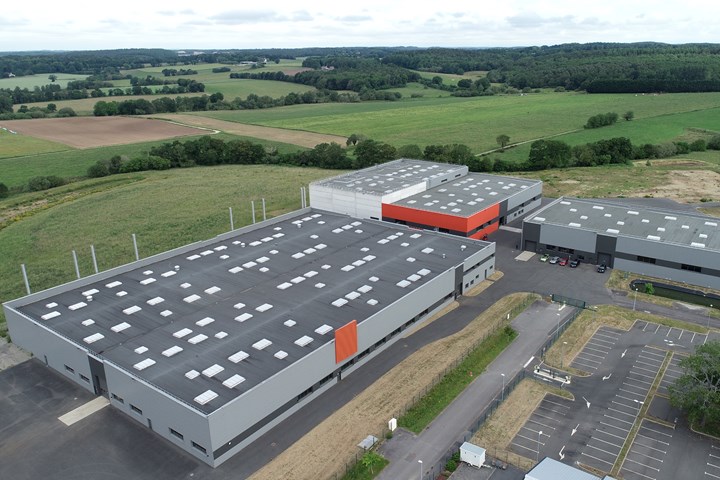Apply Carbon France invests in new manufacturing facility for recycled carbon fiber
The 15,600-square-meter facility will integrate the former ELG Carbon Fibre’s short carbon fiber business to address the growing market for sustainable technical fibers.

Apply Carbon Plouay, France facility for carbon fiber recycling. Photo Credit: Apply Carbon
Apply Carbon (a subsidiary of Procotex Corp. Belgium, Languidic, France) announced investments to expand its production of recycled carbon fibers, and facilitate the integration of the recent asset deal of ELG Carbon Fibre’s (recently rebranded as Gen 2 Carbon, Coseley, U.K.) short carbon fiber business.
The new 15,600-square-meter facility — built in 2014 in Plouay, Brittany, France, with an extra 90,000 square meters for expansion capabilities — will help to address the growing market for recycled carbon fibers in the near future.
“Within a very short timeframe, expansion of the Plouay site has created a tremendous economic growth and opportunities for Apply Carbon,” says Bruno Douchy, sales director of the Procotex Corp. Group which Apply Carbon is part of.
The production site at Languidic, France, and the transfer of Gen 2 Carbon’s machinery and carbon fiber stocks will gradually be integrated in this new facility, Apply Carbon says. This merger will reportedly create state-of-the-art process capabilities, as well as added quality and capacity to serve the worldwide growing needs of sustainable carbon fiber.
According to Apply Carbon, the effects of the COVID-19 pandemic and the pivot for climate action are at the basis of the strongly growing interest for recycled carbon fiber today. On the one hand, the company notes, new applications and new sustainability targets are generating an increasing demand for lightweight materials that combine robust mechanical performance and tailored electrical properties. On the other hand, carbon fiber-reinforced plastics (CFRP) will provide new lightweight and metal replacement opportunities in the mobility sector, enabling CO2 emission reductions without compromising on desirable properties such as mechanical performance or electromagnetic interference (EMI) shielding efficiency.
Apply Carbon’s high-quality, soft post-industrial waste is sourced from major carbon fiber producers or processors, and then converted into a wide range of recycled products including milled, cut and granulated product forms. An appropriate surface treatment applied during the manufacturing process ensures full compatibility with the matrix polymer in the final compound (polypropylene, polycarbonate, polyamide, etc).
“The acquisition of the new facility in Plouay and the integration of the machines, stocks and business of ELG [Gen 2 Carbon] will complete the next strategic step in a journey of remaining the leading sustainable carbon fiber supplier across diverse applications, markets, materials and product lines,” says Hervé Cayuela, CEO of Apply Carbon France. “Now a full range of pyrolyzed and non-pyrolyzed, sized, cut, milled and granulated recycled fibers will be available.”
Apply Carbon says it is global innovation leader in the production of sustainable technical fibers, such as carbon fibers, para-aramid fibers and others such as quartz. The company also provides solutions for many key markets including compounding, gasket, friction, 3D printing, nonwoven and thermoset.
Related Content
-
Bio-based acrylonitrile for carbon fiber manufacture
The quest for a sustainable source of acrylonitrile for carbon fiber manufacture has made the leap from the lab to the market.
-
PEEK vs. PEKK vs. PAEK and continuous compression molding
Suppliers of thermoplastics and carbon fiber chime in regarding PEEK vs. PEKK, and now PAEK, as well as in-situ consolidation — the supply chain for thermoplastic tape composites continues to evolve.
-
TU Munich develops cuboidal conformable tanks using carbon fiber composites for increased hydrogen storage
Flat tank enabling standard platform for BEV and FCEV uses thermoplastic and thermoset composites, overwrapped skeleton design in pursuit of 25% more H2 storage.
















